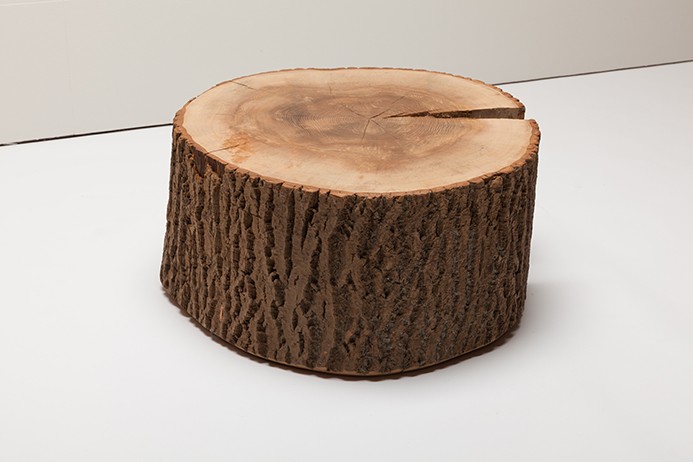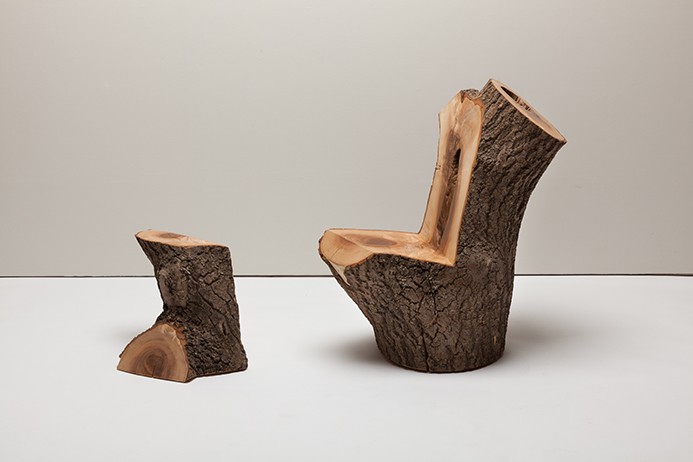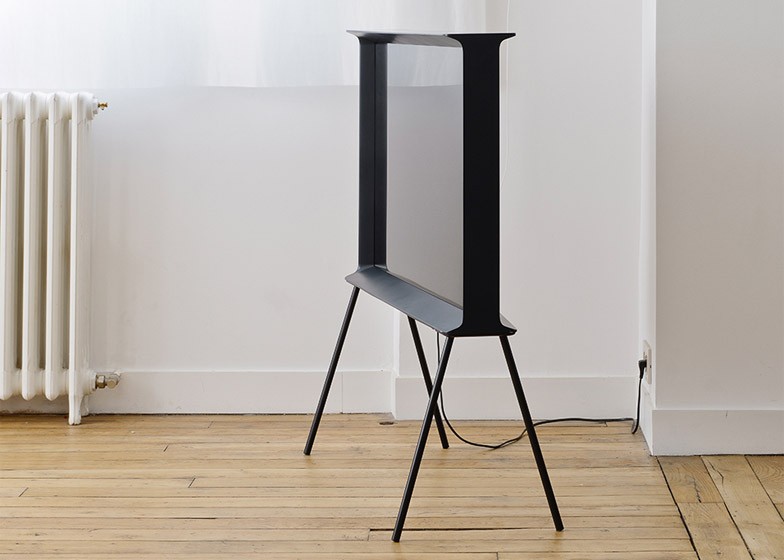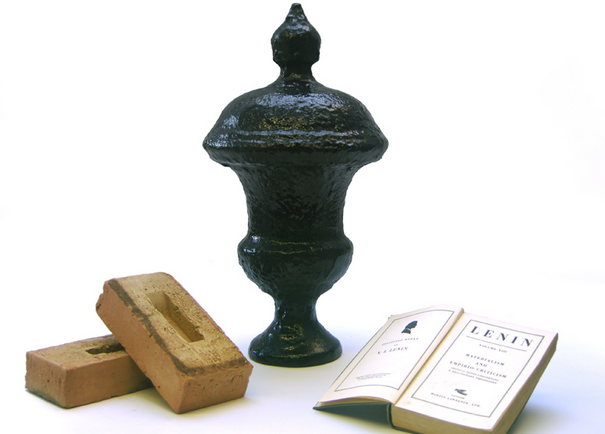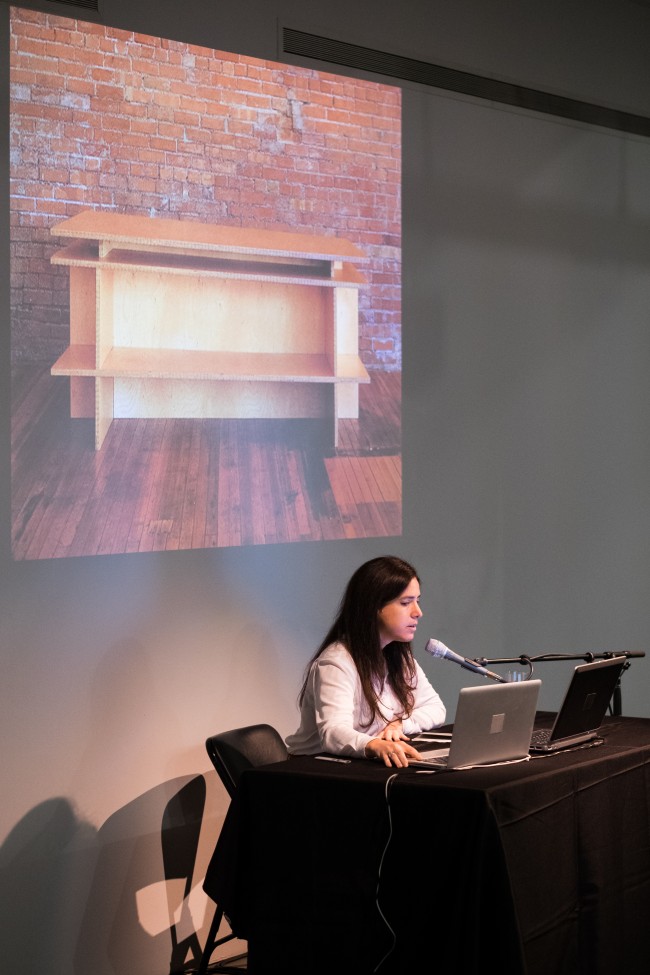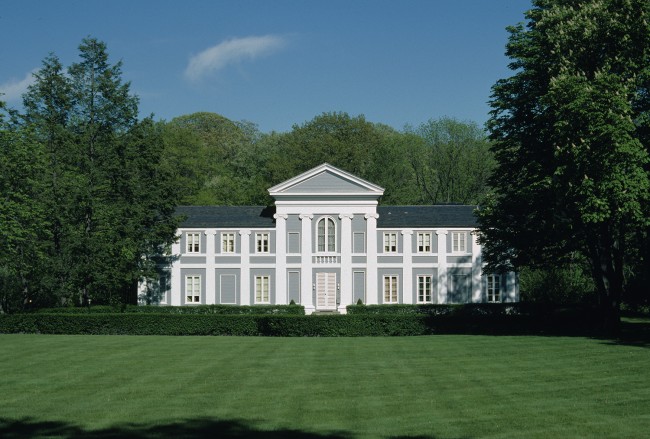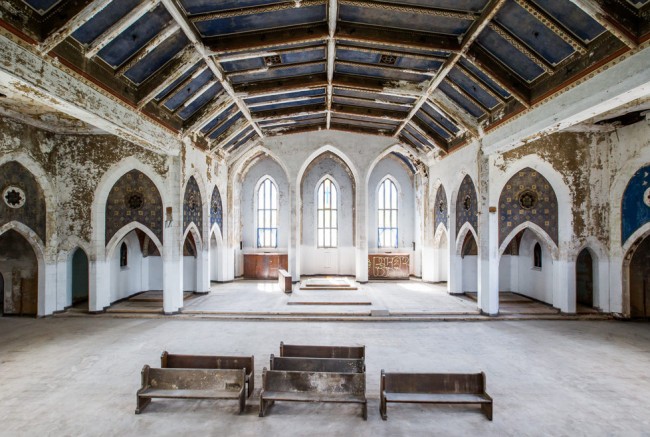DESIGN COLUMN #2: FRAGMENTS FROM LONDON
Dearest PIN–UP readers,
Last month’s London Design Festival. I came. I saw. It rained. As is often the case, the program included innovational endeavors, such as Tino Schaedler’s virtual reality machine (complete with a days-long waiting list); Tabanlioğlu Architects and Arik Levy’s Warm/Wet compositions of LED lights exploding overhead opaque kinetic surfaces; Alex Chinnek’s feat of engineering Bullet from a Shooting Star; perhaps the chicest TV to grace a credenza, the Bouroullec Brothers’ SERIF TV for Samsung; and Marjan van Aubel’s pastel photosynthetic furniture. A powerful mix of products for the future, material calisthenics, and celebrations of industrial might.
But amid these technical achievements — and sometimes provocations — there was also a selection of decidedly analog shows that truly captured my attention, all of them centered around strategically arranged fragments. Somerset House, for example, hosted some of the festival’s most talked about revelations. Among them was Max Lamb’s installation My Grandfather’s Tree. Staged like a vintage family reunion, My Grandfather’s Tree featured rolling slides, a grainy home-movie, and rows of seating made from carefully cut segments of a female Ash felled from Max’s grandfather’s Monckton Walk Farm in Yorkshire. The tree was 187 years old when Lamb, together with a local arborist, took measure of its frame and cut it piecemeal from top to bottom. At a dinner in his honor, hosted by Valerio Capo and Sam Pratt (Mr. and Mr. Fumi, from the namesake London gallery), Lamb thanked his grandfather for teaching him the value of hard work, then described the long process of cutting down, cataloguing, curing and reassembling the tree six years later for the show. After Somerset, the tree was deconstructed again. Its individual pieces will find homes throughout the world.
Over in Holborn, at the former residence of 18th-century architect Sir John Soane — now a museum dedicated to his eclectic collection of paintings, ancient artifacts, and decorative objects — London-based Workshop for Potential Design curated an exhibition in keeping with Soane’s obsession with historic building fragments from ancient Greece and Rome. Entitled Pieces and set up among Piranesi drawings and a trompe l’oeil trellis ceiling of what used to be Soane’s second breakfast room, the curatorial collective’s show consisted of object interpretations of Soane’s vast collection. Study O Portable presented glass and grained Building Blocks; Gemma Holt showed Arranging Marbles, vessels made of sections of marble moldings; Peter Marigold produced Timbrephone, a xylophone made of found objects; Paul Elliman submitted themed piles of bits and bobs from his own collection (including rocks, coins, and marbles); and Sam Jacob’s contribution was an urn designed for Lenin based on a finial from the Russian revolutionary’s former home.
The second discovery at the Academy was Wanderlust, a small exhibition of Joseph Cornell’s early 20th-century collages, shadow boxes, and films that made the most poetic use of stray parts. Endlessly wandering the streets of New York City in search of curiosities for his collection, the American artist created magical worlds using common objects; turning trash into treasure, as they say. The show framed Cornell’s body of work around fascinating aspects of his biography: he worked a 9 to 5 job; he never left New York; he never married; and he lived with his mother for his entire life. Only through his immense imagination did he translate the most common of experiences into operatic daydreams — each more fantastic than the last.
But what did it all mean? Perhaps the reason these recurring expressions of fragmentation resonated so deeply has to do with recent shifts in London’s design scene — a hot topic of conversation during LDF. Still considered the center of the design world with high concentrations of international designers, a booming market and top-rated schools, London is experiencing a critique of its practices by the pillars of its very community. The Royal College of Art, which has in many ways set the pace of aesthetic and critical progress for the past 10 years, finds itself accused of neglecting the experimental verve that has made it famous, and of moving towards more predictable creative outcomes. As a result, some of its most esteemed tutors have left the school. Add to that increasing cuts in governmental funding for the arts and housing prices so high that an entire creative class is being pushed out of the city, and one can’t help but question London’s ability to maintain it’s edge.
Doesn’t one hope, for the sake of good design, that these perceptive exhibitions at LDF are a reminder to London that it should not so easily lose those parts which have contributed to its greater whole.
Truly yours,
Pepa
Pepa Shores is a trusted aesthete and design doyenne who irregularly pens reports for PIN–UP from her various travels around the world.

